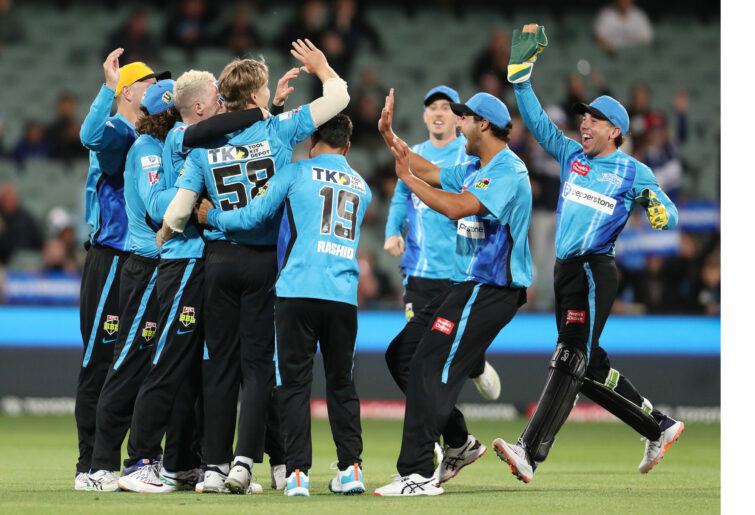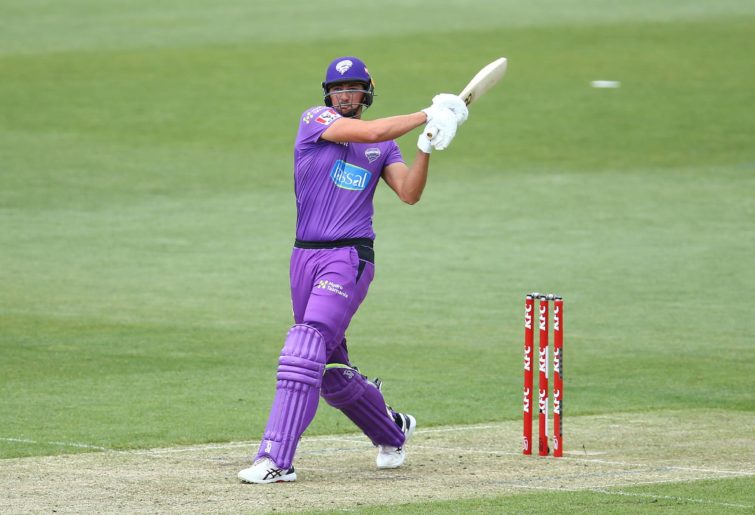As the 2022-23 season warms up, the Australian T20 Big Bash League faces a crossroads.
As it stands, in the BBL, Cricket Australia possesses an entertaining product. The decision they need to make is whether or not they’re happy with that, or want to consider creating a meaningful sports league.
In 2018 the Adelaide Strikers hosted the BBL final at Adelaide Oval in front of nearly 41,000 fans. All of them cheered heartily as the final ball was bowled and Adelaide took out the title. That cheering lasted about half an hour, and by the time everyone was leaving the stadium, most people looked more like they were thinking about what to pack for lunch at work the next day.
Compare that with the veritable month-long meltdown that would occur if either of South Australia’s AFL teams won a flag. It’s a stark contrast.
In its short life thus far, the BBL has prioritised entertainment over substance. For many reasons, this may have been a strategically clever move.
The hype machine at Cricket Australia is certainly well oiled and it’s probably fair to say that they’ve maximised sets of eyes on the league. Fireworks, dancers, music, activations – there’s no shortage of things to see and do at a BBL match. It’s so entertaining that I think sometimes people actually forget to watch the cricket.
Economically, the sacrifice of substance at the altar of spectacle has been an irrefutable success for CA. But at what cost to sustainability? Last season’s average attendance across the competition was 7371.
Pandemic factors can’t be ignored in that figure. But whichever way you parse the numbers, you see a steady decline in attendance since 2017, with a dramatic drop for the 2021-22 season. So far in 2022-23, on available crowd figures, the average attendance is 11,420. But a couple of outliers are carrying that statistic.
Without wanting to sound like a cardigan-wearing traditionalist, one does wonder if this a symptom of surpressing the cornerstones of the game in favour of more shots that reach the fence.
But more importantly, where to from here for the BBL? It seems clear that they must ascertain what’s causing the drop off in interest.

(Photo by Sarah Reed – CA/Cricket Australia via Getty Images)
Can the pandemic truly be blamed? Still? Or have people finally fatigued of the meaningless hit and giggle? What part does the media’s complete lack of analytical coverage have to play? Is a sports league that is now more entertainment than sport sustainable?
Ultimately, they must raise the stakes. They have to make the results mean something. At this point, the BBL has more in common with a concert, or the theatre, than it does with sports. It has completely failed to capture the imagination of analytically-minded sports fans and journalists.
A Sheffield Shield win currently carries more weight than an entire BBL title. Broadly speaking, no one really cares who wins a BBL match. That has to change if the competition is to survive.
Losses need to hurt and wins need to heal. Weekday afternoons at the pub, we want to be talking about the strategy required to win, not how many times the flames went off.
So, how is that achieved? Here are some thoughts on the matter.
Bring back the parochialism
The pseudo-franchise model, removing association with state programs, was a mistake. Especially given the popularity of the earliest iterations of the league when state teams still featured. The Blues, Redbacks, Bushrangers etcetera are iconic monikers in Australian sport.
The creation of wholly new colours and motifs was contrived and ultimately damaging. How people in Melbourne chose whether to follow the Stars or the Renegades is still unclear, but whatever the case, it wasn’t based on any sense of geographical identity. This aspect of the competition must be revived.
If that means fewer teams, so be it. But rather than decreasing the number of teams, they might consider putting the NT and the ACT into the competition. This creates games in Darwin and Canberra without having to make other teams play there and opens up new markets.
There’s also no reason to remove the fluidity of player movement or signing of imports.

(Photo Getty Images)
Tone it down
Putting on a show is fine. But at the end of the day, if the peripheral activities are more exciting than the play, something is wrong. If our younger generations grow up loving T20 but having no patience for the long form, how will we fill a Test team in 20 years?
One also wonders how much the decline in attendance has to do with T20 being aimed almost exclusively at families. For those with kids, Sunday afternoon games at 3pm are great. But for everyone else, they’re rubbish. Kids love loud music in between every ball, but most people over the age of 40 can’t stand it.
T20 doesn’t need to be at odds with Test cricket. They can co-exist, but not as long the BBL is hell-bent on the narrative that Test Cricket is boring. The differences can be celebrated without the markets for both forms being seen as mutually exclusive by Cricket Australia.
Give cricket analysts something to care about
The contest between bat and ball has been lost in the bright lights of T20. Batters can basically do as they please, switch hitting and dancing around in their creases at will. At the other end, bowlers are penalised for anything other than delivering the ball at the required speed directly into the hitting zone of the hitter. I use the term hitter in place of batsman deliberately.
This year’s Adelaide Strikers squad is doing its best to prove me wrong here. But make no mistake, as devastating as Thornton, Agar, Khan and Siddle can be, without Short’s form with the bat they wouldn’t have won as many games as they have.
Aside from making the game frustrating to watch at times, making the game all about batters also deprives cricket analysts of any real fodder because wickets have become largely extraneous – at least in so far as they contribute to the bowling side’s chances of victory.
What analysis is there to be done on a game that has so aggressively simplified cricket? Make runs, chase runs. When there’s no realistic chances of a team being bowled out, there’s little to discuss. Losing wickets means real trouble in a 50-over game, but as long as you don’t lose more than one every two overs on average in T20, you’re golden. And that’s fairly rare.
The obvious solution to making wickets more valuable? Have fewer of them.
Nine-a-side would mean eight wickets to bowl a side out and fewer fielders – both of which would sharpen the value of the bowler. It would create a fairer scenario, and one closer to the original intent of T20; a faster paced true cricket format. Yet, none of the attrition would be sacrificed.
>Cricket News

%20(3).jpeg)



0 Comments